Deploy Manager Online Help
This is a dedicated online help to assist you understand our product easily and quickly, for any questions and concerns not addressed on this page, please do not hesitate to contact and we will always be happy to help.
Deploy Manager
- Hardware Requirements
- System Requirements
- License
- Create WinPE Disk
- Add Machines
- Deployment
Welcome
Thanks for using EaseUS Deploy Manager. It serves as a safe, quick, and efficient system deployment tool to provide multiple machines system installation at one time, which simplifies the IT administration routine and improves work efficiency.
Using this tool, you can restore the system backup to a group of computers with different hardware with a few clicks.
Getting Started
This part outlines basic parameters to use EaseUS Deploy Manager. It is to help you acquire a general understanding before you get started.
Hardware Requirements
The minimum hardware requirements for EaseUS Deploy Manager are:
1000 MHz processor or faster
At least 1 gigabyte (GB) of available space on the hard disk
Keyboard and a Microsoft Mouse or some other compatible pointing device
System Requirements
EaseUS Deploy Manager supports the following operating systems:
Windows XP/Vista/7/8/8.1/10/11
Windows Server 2003/2008/2012/2016/2019
Windows Small Business Server 2003/2008/2011
License
Please click License on the left side to activate the software as well as check the license information. A license will be used once a machine boots into EaseUS Deploy Manager recovery environment.
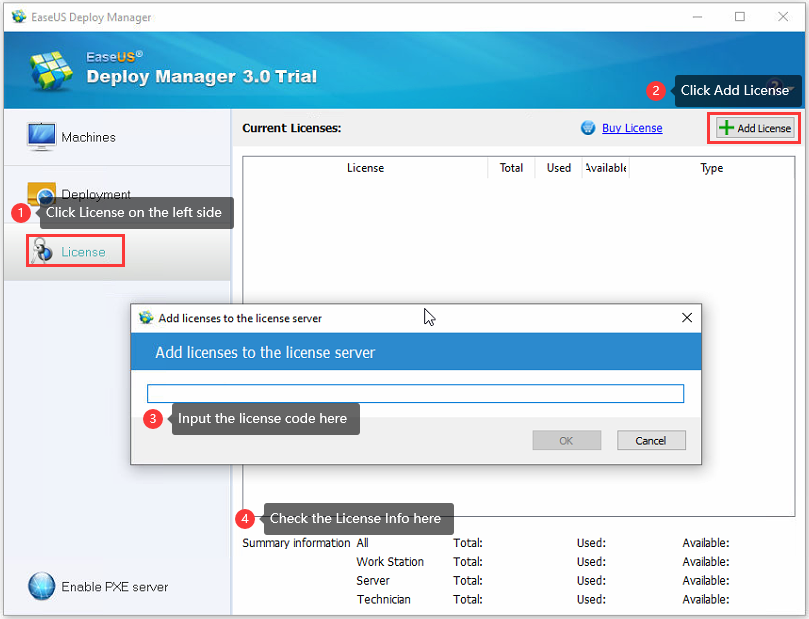
How to deploy
EaseUS Deploy Manager is so easy to use, you just need to create a task and Run it. Recovery will be executed automatically when client machines are set to PXE boot. Here are the detailed steps.
Create WinPE Disk
When running EaseUS Deploy Manager for the first time, a window to create WinPE would pop up. You can create new WinPE file, or select existing WinPE image file.
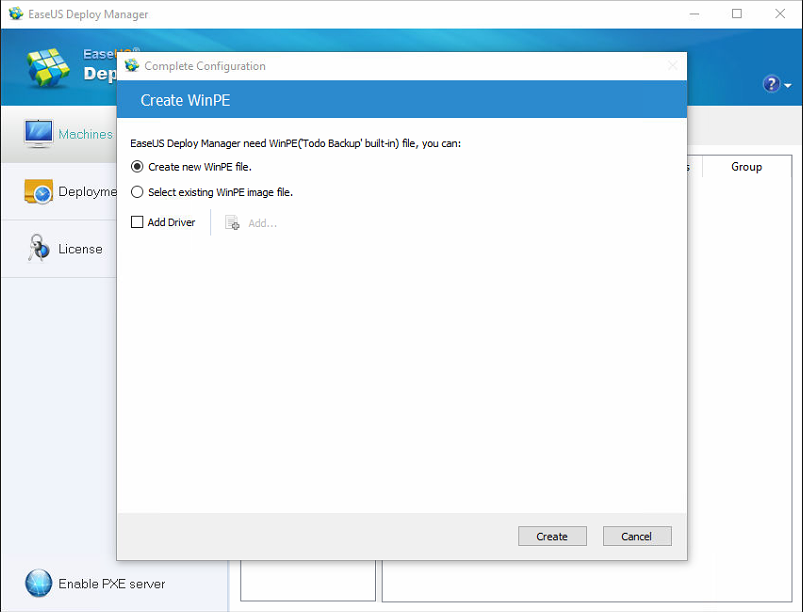
Add Machines
EaseUS Deploy Manager allows to add the machines in Local Network as well as manage them in groups.
Create Group
It is possible to manage the client machines with groups. By default, there's a group named All machines. You can add your own group for machine management by clicking Create group.
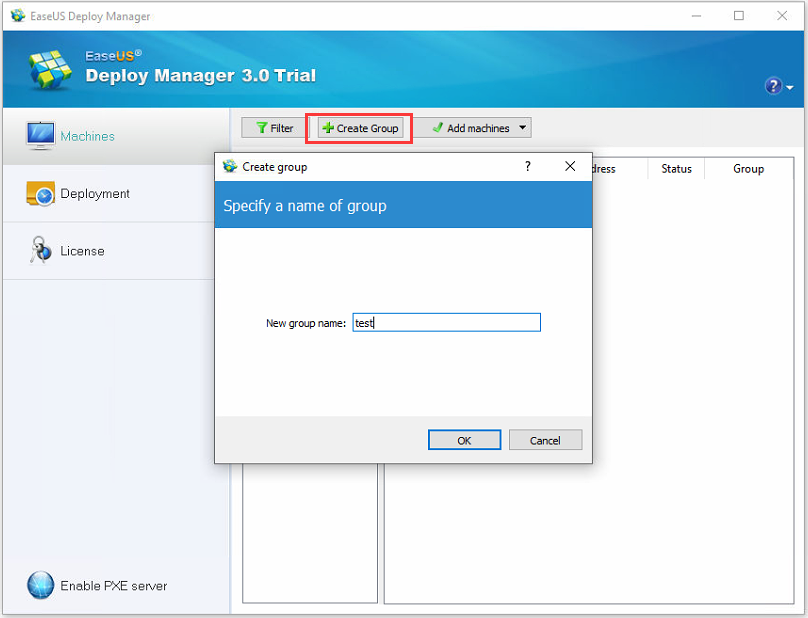
Add Machine
EaseUS Deploy Manager identifies the client machines by their MAC address. To Add machines, there are two methods available, from file and by MAC address.
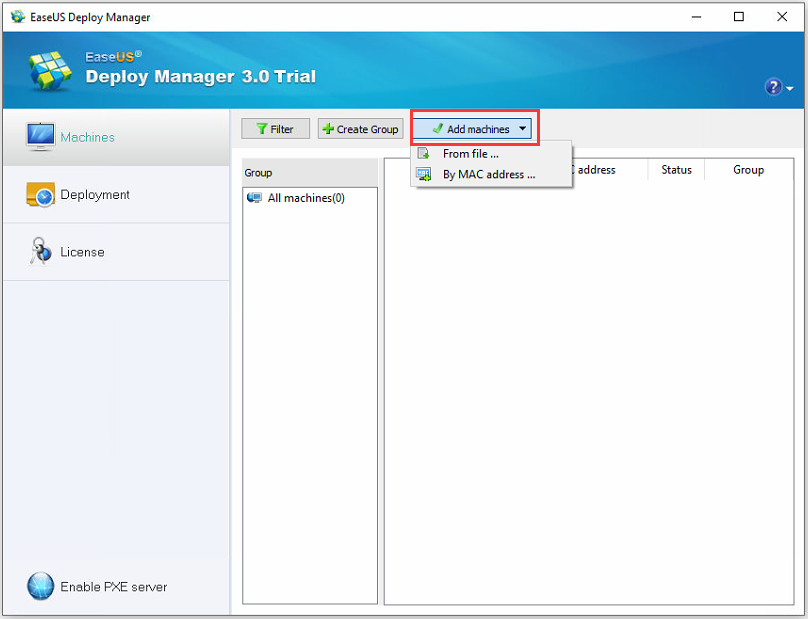
From file:
The machines are added by importing a machine list file. The file should be in txt format and the items listed the same way as below screenshot. Mac address and Alias are separated with Space or Tab.
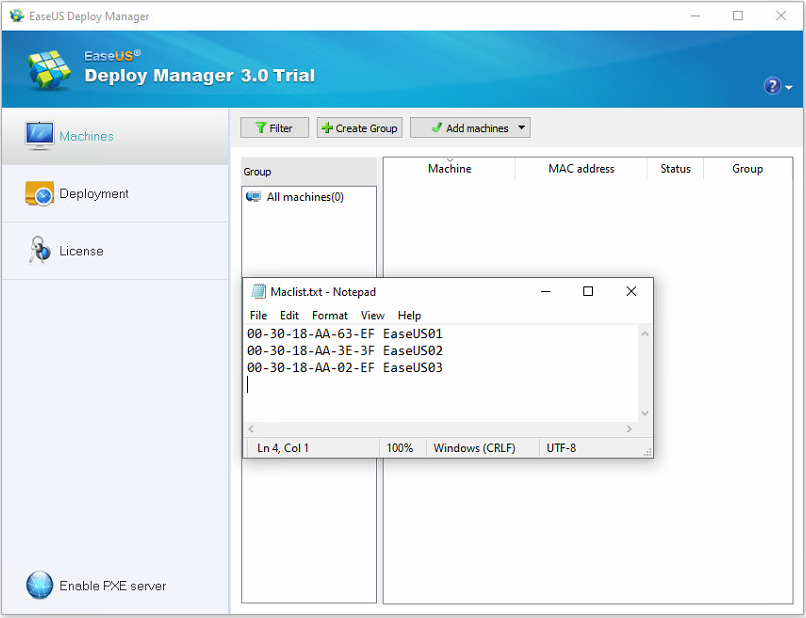
By MAC Address:
To add a single machine, please input the MAC address, Alias, and choose the Group.
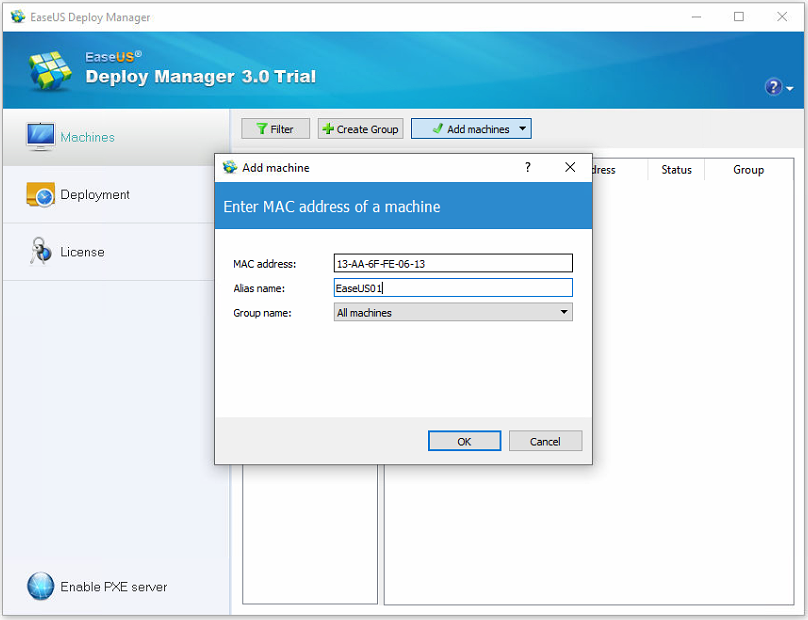
Once the machines are added, you can right-click it to edit, move to another group, remove or delete the machine.
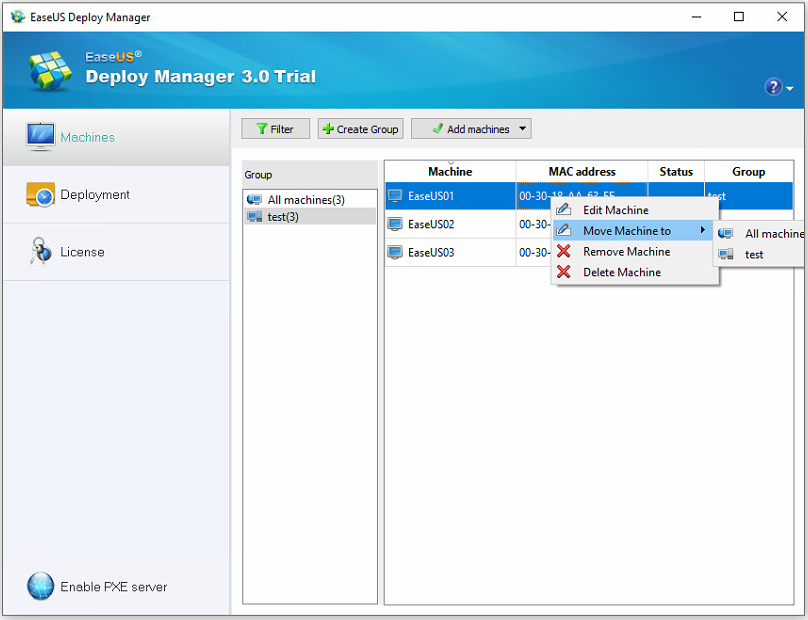
Deployment
In the Deployment page, it lists the deployment tasks which are created by EaseUS Deploy Manager. You can see the summary info of a task here including the target disk to deploy, image path, and action after deployment.
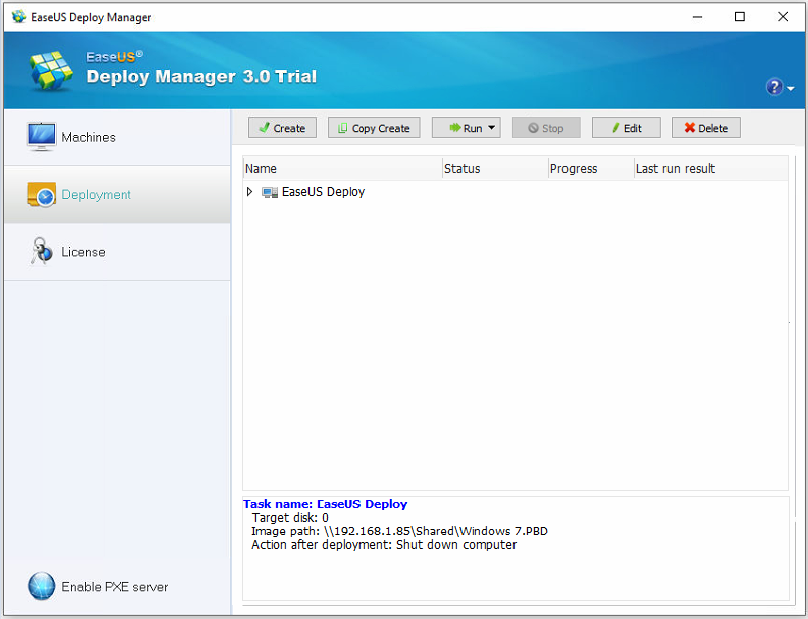
Create Task
Please click Create in the Deployment page, edit the task name and select the target machines.
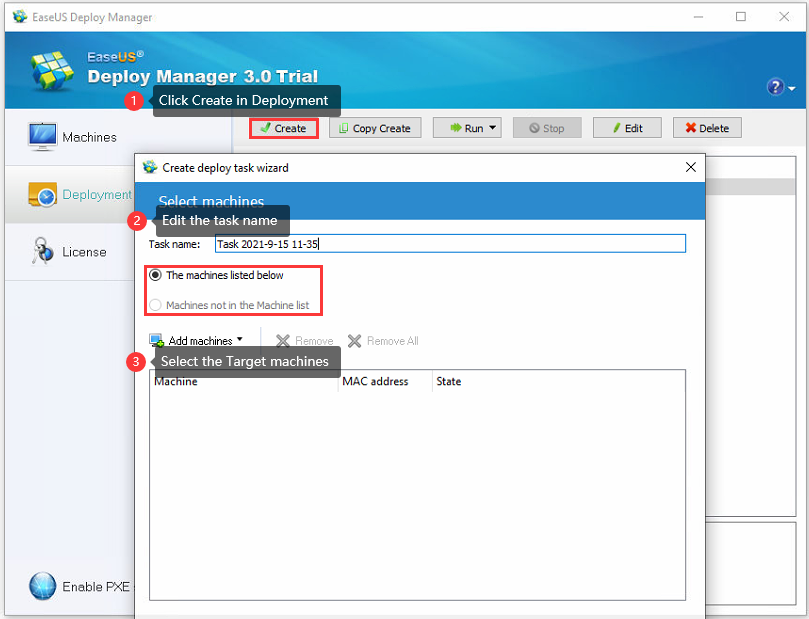
Here are 2 options when choosing the target machines.
The machines listed below:
Select specified machine to execute this task. You can select the machines from the Machine list you have added before, or add new machines.
Machines not in the Machine list:
With this option, if a system is in the LAN but not in the Machine list you have added, it will execute the task you created when choosing PXE boot.
After that, please click Next and specify the settings for the deployment task, and Save it.
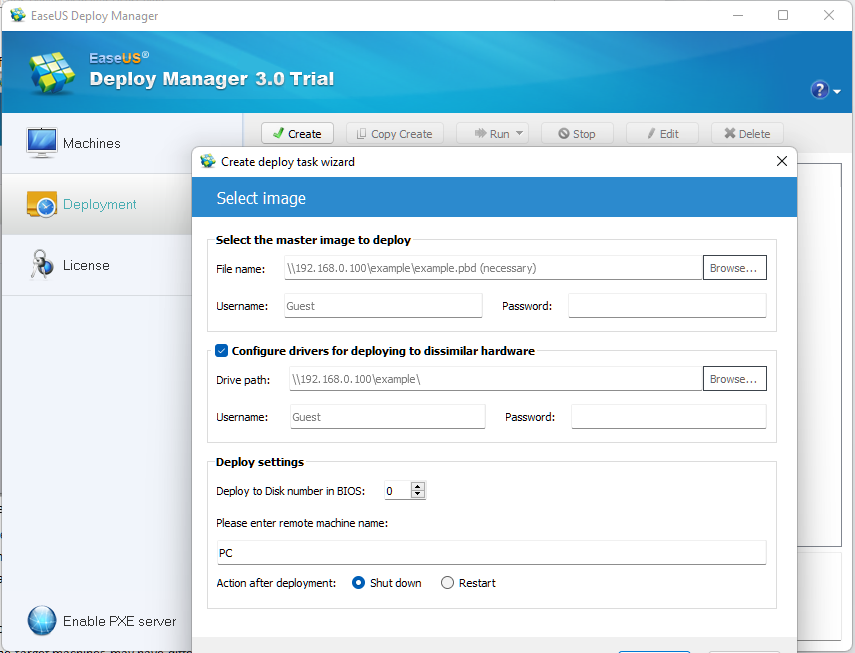
Select the master image to deploy:
Please input the path and name of the image file which needs to be deployed. The image file should be saved in a network location, so the software also requires the Username and Password to access to the network location.
Configure drivers for deploying to dissimilar hardware:
The target machines may have different hardware configurations. To make sure the deployed system is bootable, the software will try to search for the available drivers and install them into the deployed system. The drivers’ storage directory need to be specified before the deployment.
Deploy settings:
Specify the disk for deployment. The sequence of the disks would be the same as Windows Disk Management.
Enter the Computer name for the machines after recovery. EaseUS Deploy Manager will automatically set the computer name with numbers for multiple machines.
Action after deployment:
This setting determines what to do with the target machines after the deployment is finished. Choose whether to shut down or restart the target machine after the deployment.
Note:
- The image file must be a full Disk/partition/system backup image which is created by EaseUS Todo Backup, without encryption.
- Driver files should be in .inf or .sys file format in most cases.
- When deploying Windows Vista or previous OS, you may need to prepare crucial drivers for recovery such as SATA controller driver, otherwise, the system may not boot after the recovery.
Enable PXE server
Please enable PXE server so that the target machines can boot from network and execute the deployment. Only one EaseUS Deploy Manager is allowed to install in a Local Network. And make sure there is no other PXE server enabled during the deployment.
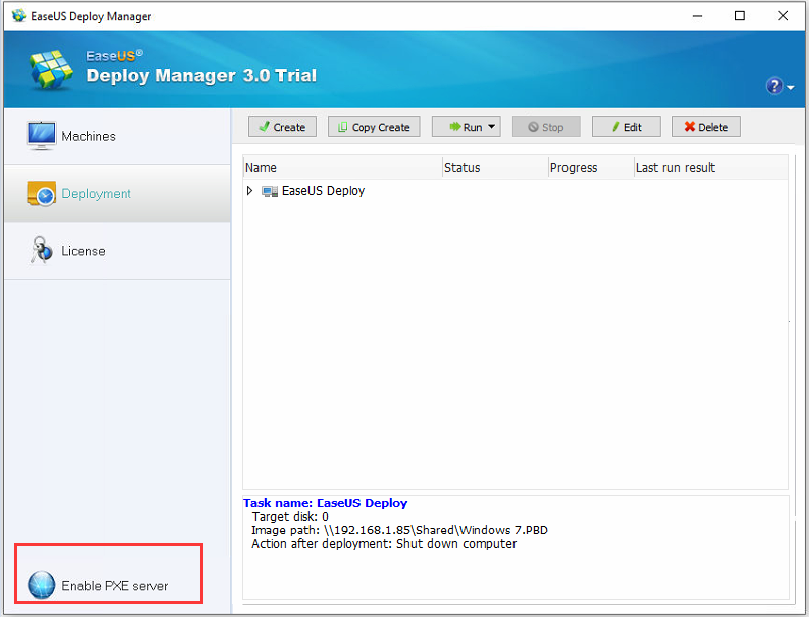
Also, make sure that there is an available DHCP server in your Local Network. If all the settings are correct, the target machine will boot from network, enter into EaseUS Deploy Manager recovery environment and run the recovery automatically.

Start the Deployment
Once the task is created and PXE enabled, please click Run to start the deployment.
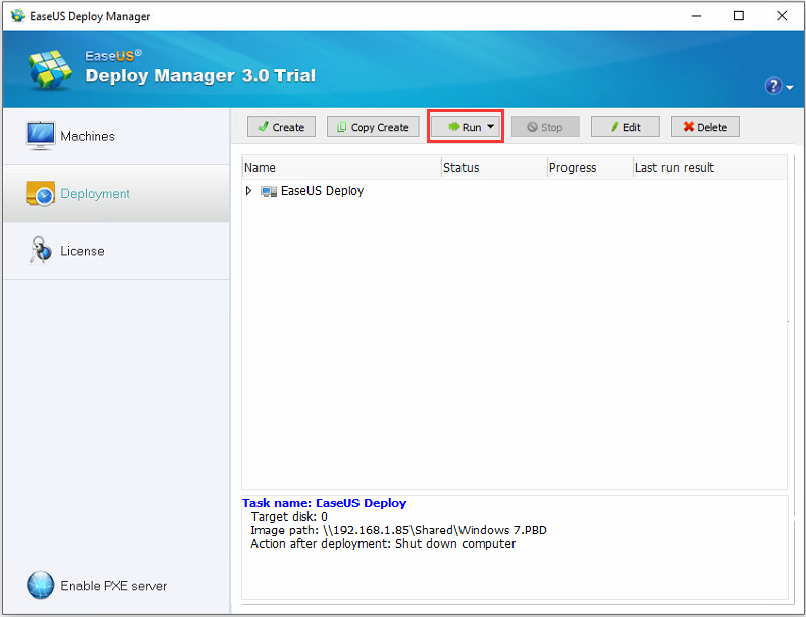
EaseUS Deploy Manager will show you the recovery progress of the target machines.
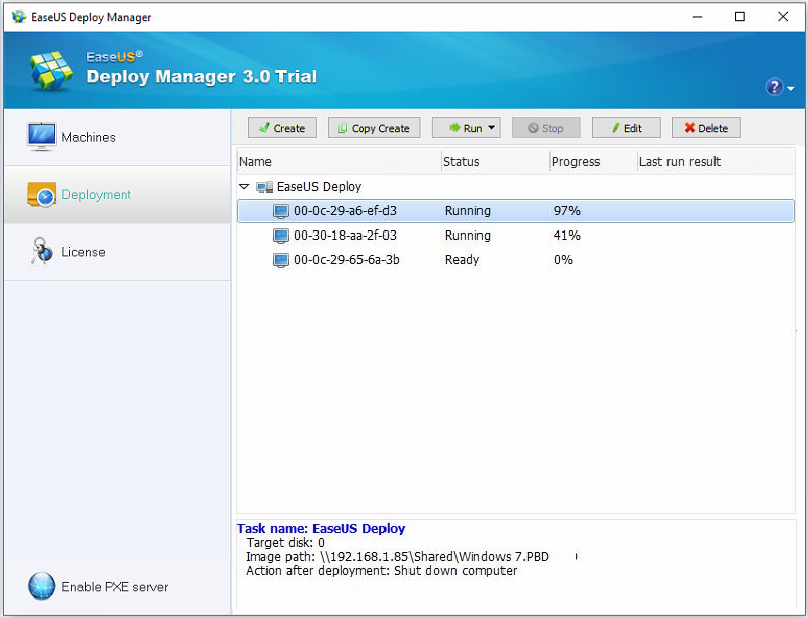
If the deployment fails on some of the machines, it will automatically deploy again during the next boot. You can also select Run failure to only deploy on these failed machines.
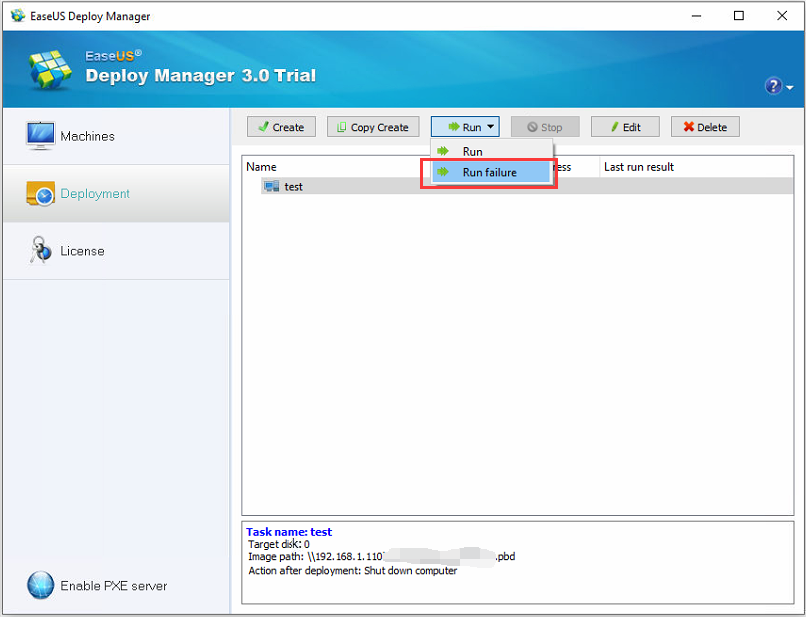
Note:
The destination disk for deployment must be larger than the one you backup. All the data on the target disks will be erased in the recovery process. Make sure there is no important data before deployment.
Feedback and Support
We invite your comments on how well EaseUS Deploy Manager performed, and we are also enthusiastic in replying all your questions about using it. Please feel free to contact us at:
[email protected]
We also provide online chat service and the Live Chat option can be located on EaseUS official website www.easeus.com.